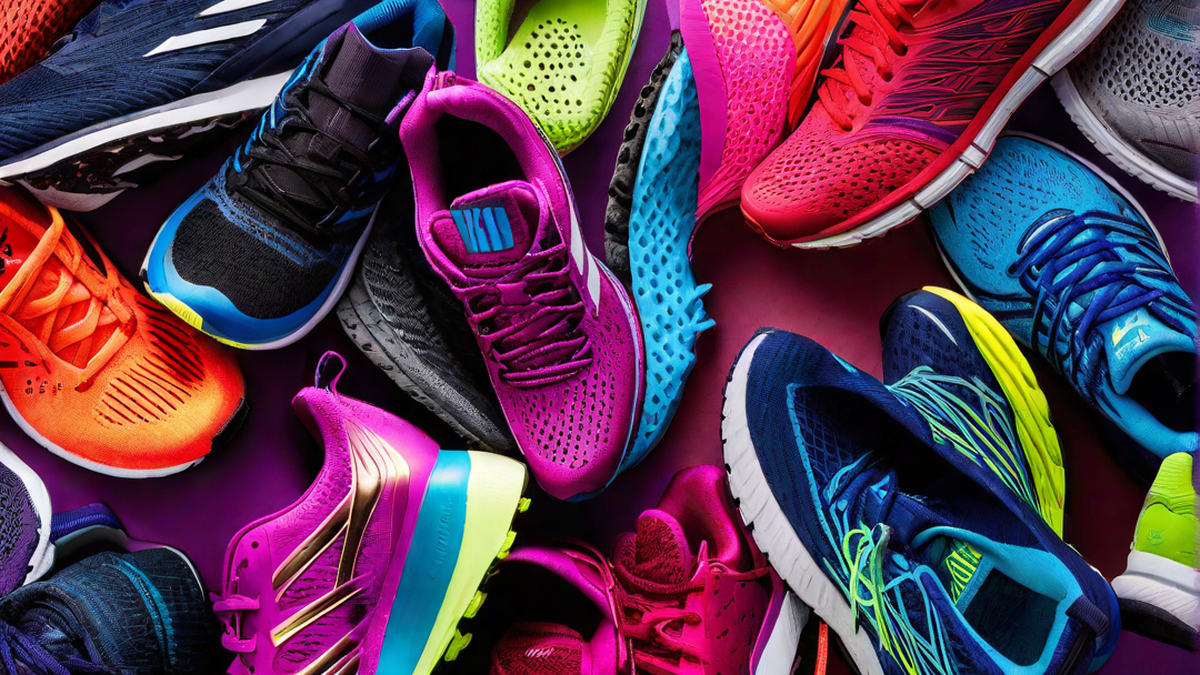When it comes to running, choosing the right pair of shoes is crucial for both performance and injury prevention. As a runner myself, I understand the struggle of finding the perfect running shoes. With the overwhelming number of options available, it’s easy to get lost in a sea of features and marketing claims. However, fear not! In this article, I will guide you through the process of selecting the best running shoes for your needs.
1. Know Your Foot Type
The first step in choosing the right running shoes is to determine your foot type. There are three main foot types: neutral, pronated, and supinated. To find out your foot type, you can perform a simple wet test. Wet your feet and step onto a piece of paper or a dark-colored surface. The wet footprint will reveal your arch type:
- If you have a normal arch and your footprint shows a distinct curve along the inside, then you have a neutral foot type.
- If your footprint shows a complete imprint of your foot, with little or no curve along the inside, then you have a low arch or flat feet, indicating overpronation.
- If your footprint shows a very narrow curve along the inside, or even no curve at all, then you have a high arch, indicating supination.
Knowing your foot type is essential because it will help you choose running shoes with the right amount of support and stability.
2. Consider Your Running Style
Another important factor to consider when buying running shoes is your running style. Are you a heel striker, midfoot striker, or forefoot striker? This refers to the part of your foot that hits the ground first when you run. It’s a personal preference and can vary from person to person.
If you’re a heel striker, you’ll need running shoes with good cushioning in the heel area to absorb the impact. Midfoot strikers need shoes that provide a balance of cushioning and stability throughout the entire foot. Forefoot strikers, on the other hand, need shoes with extra cushioning in the front of the foot.
Understanding your running style will help you find shoes that cater to your specific needs and running mechanics.
3. Get Properly Fitted
Once you have a good idea of your foot type and running style, it’s time to visit a specialty running store for a proper fitting. The staff at these stores are knowledgeable and can analyze your foot type, running style, and make recommendations based on your specific needs.
During a fitting, they will measure your feet and analyze your gait to determine the best shoe options for you. They may have you try on different brands and models to find the perfect fit. Don’t be afraid to ask questions and provide feedback during the fitting process.
A proper fitting is essential because it ensures that you’re getting shoes that provide the right amount of support, cushioning, and stability for your feet.
4. Test Them Out
Once you’ve narrowed down your options, it’s time to test out the shoes. Take them for a short run around the store or on a treadmill if available. Pay attention to how they feel on your feet, whether they provide enough support, and if there are any areas of discomfort.
Remember, everyone’s feet are unique, and what works for someone else may not work for you. It’s important to trust your own judgment and choose the shoes that feel the most comfortable and supportive to you.
5. Consider Durability and Price
Lastly, consider the durability and price of the shoes. Running shoes can be a significant investment, but it’s important to prioritize quality and durability over price. Cheaper shoes may wear out quickly and may not provide adequate support, leading to potential injuries.
Look for shoes with durable materials and a solid construction that can withstand the wear and tear of regular running. While they may cost more upfront, investing in a quality pair of running shoes will save you money in the long run and keep your feet happy.
Conclusion
Choosing the right running shoes may seem daunting at first, but by considering your foot type, running style, getting properly fitted, testing them out, and considering durability and price, you’ll be well on your way to finding the perfect pair. Remember, finding the right running shoes is a personal journey, and what works for one person may not work for another. Trust your own judgment, listen to your body, and happy running!

